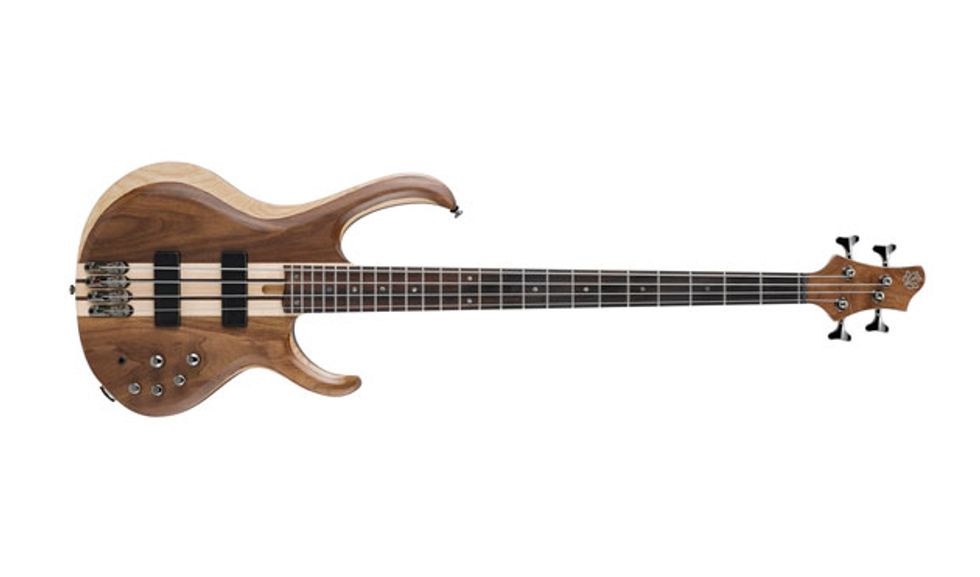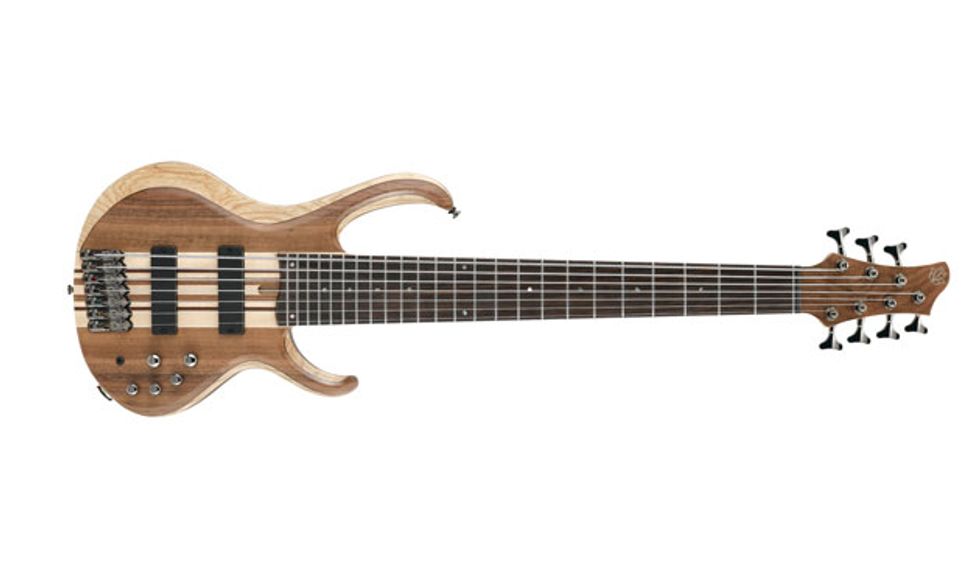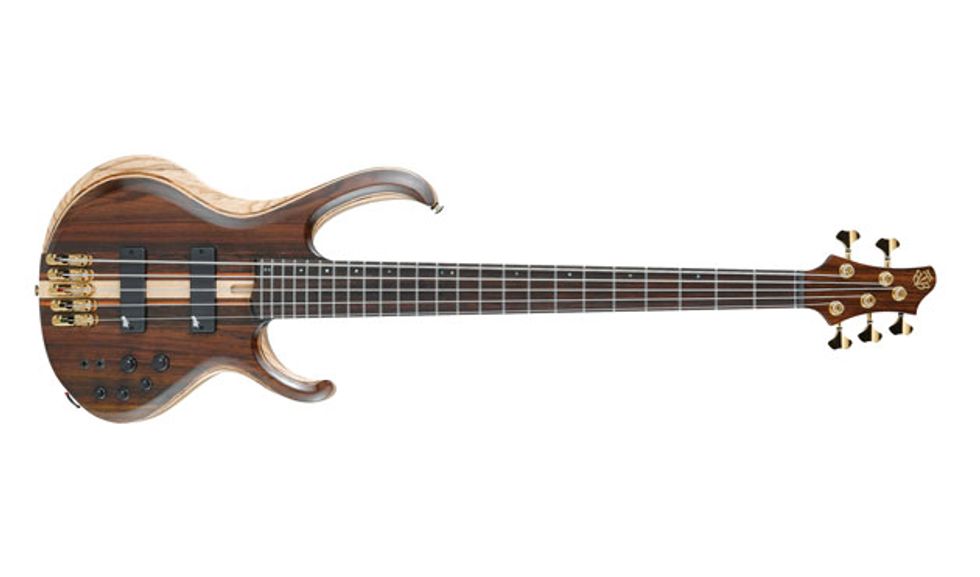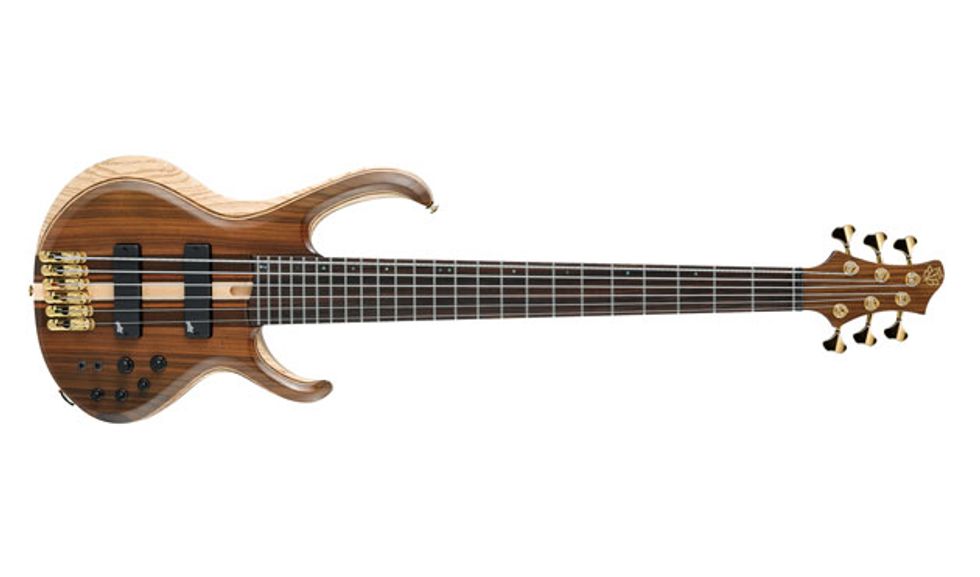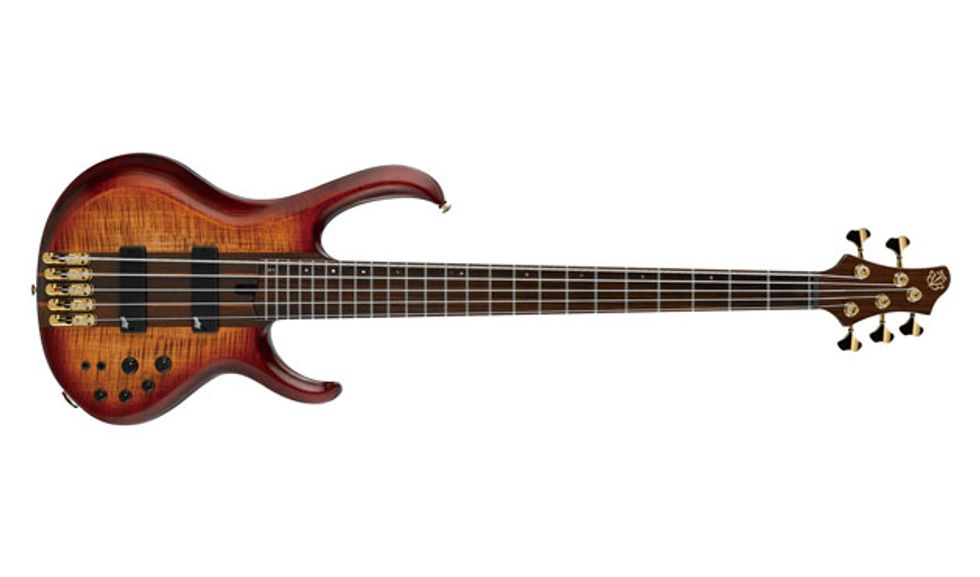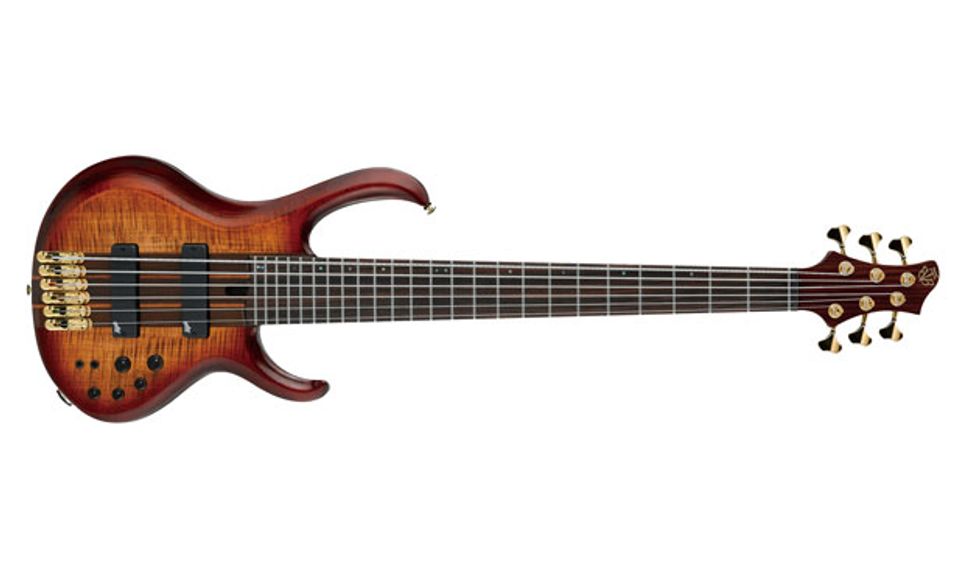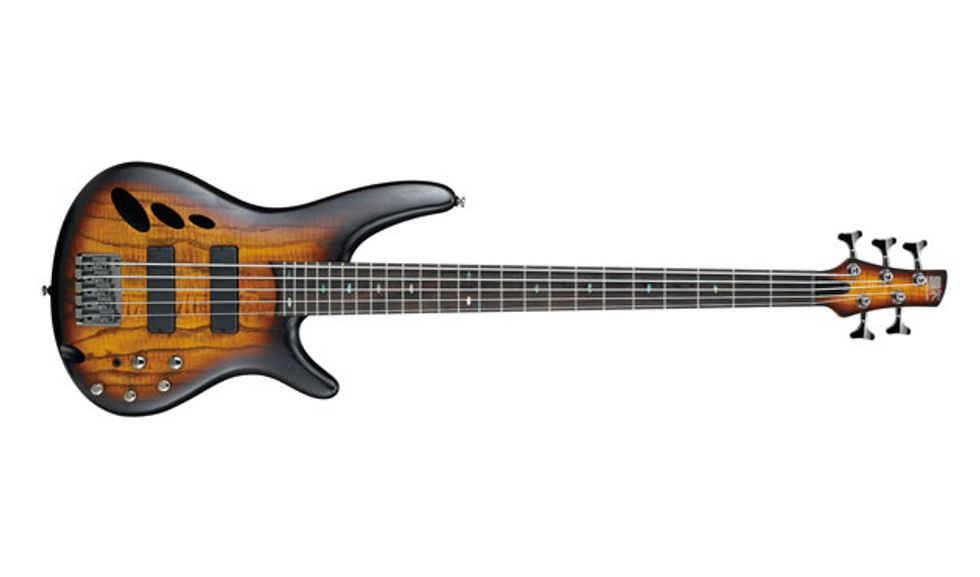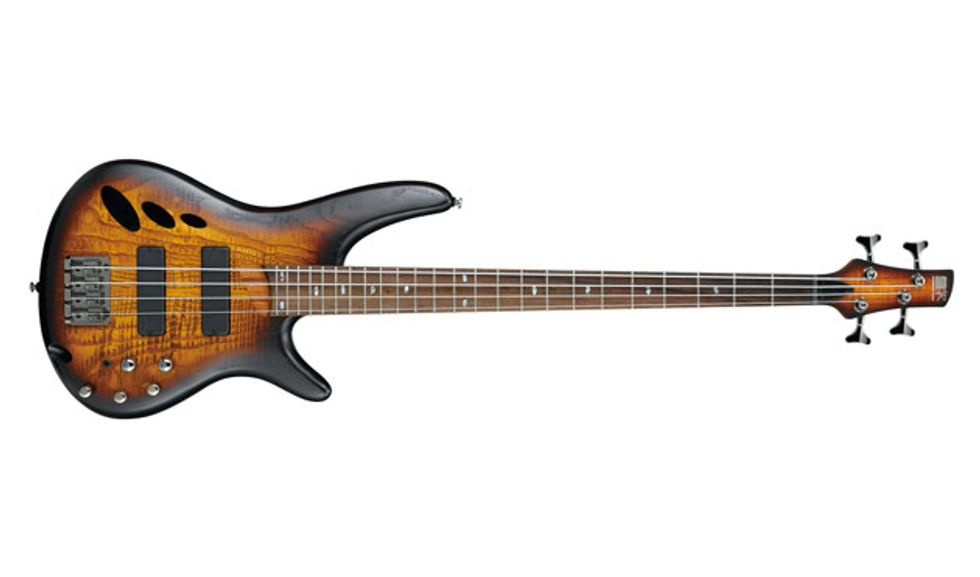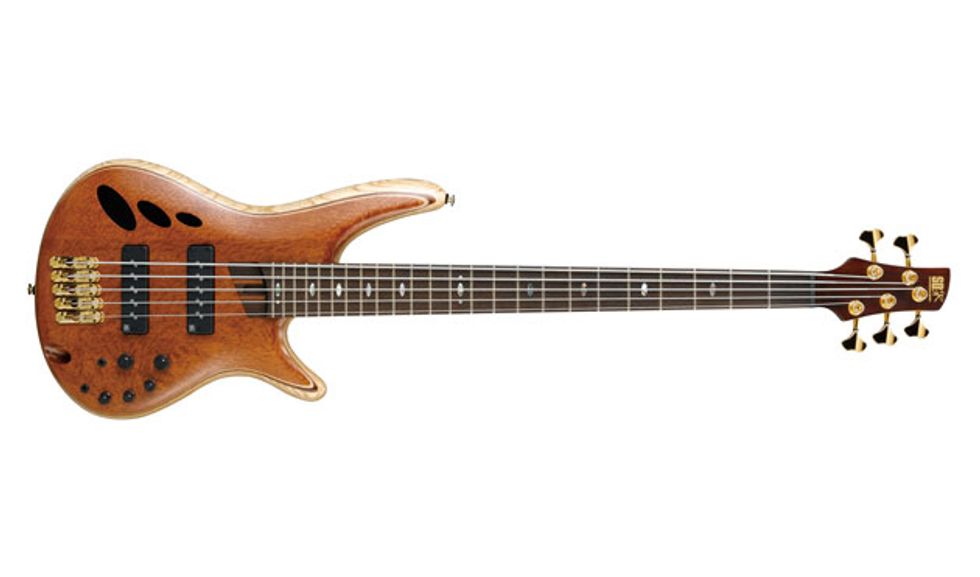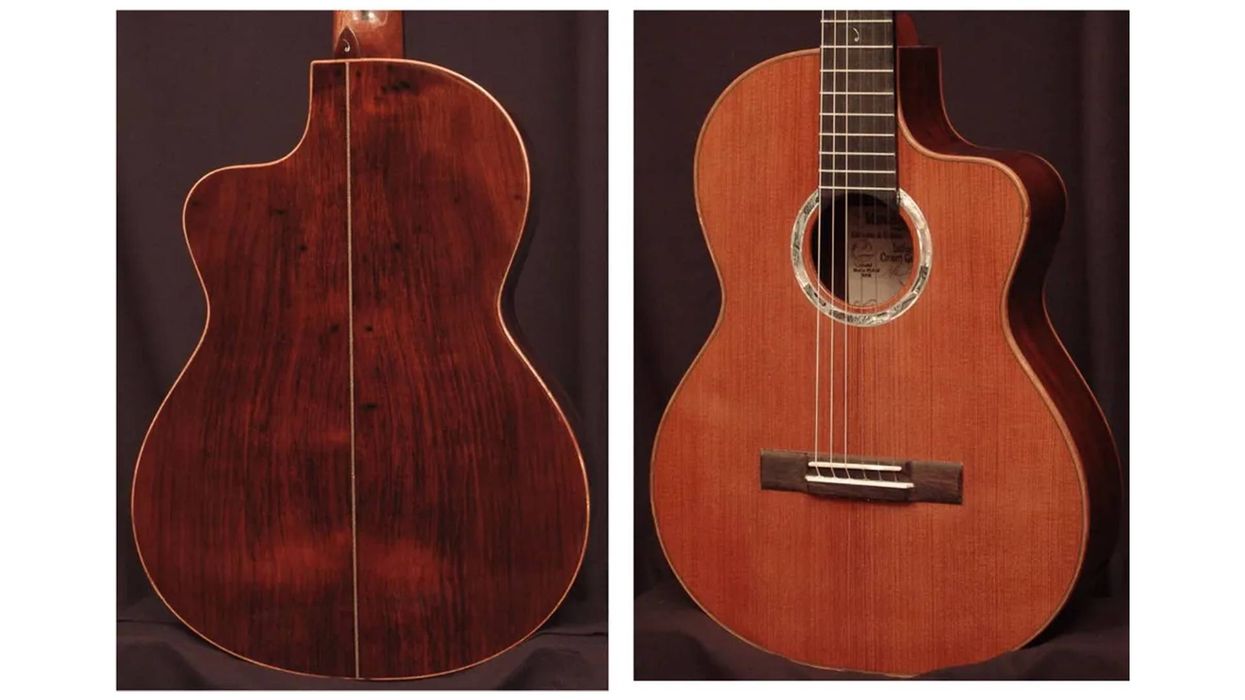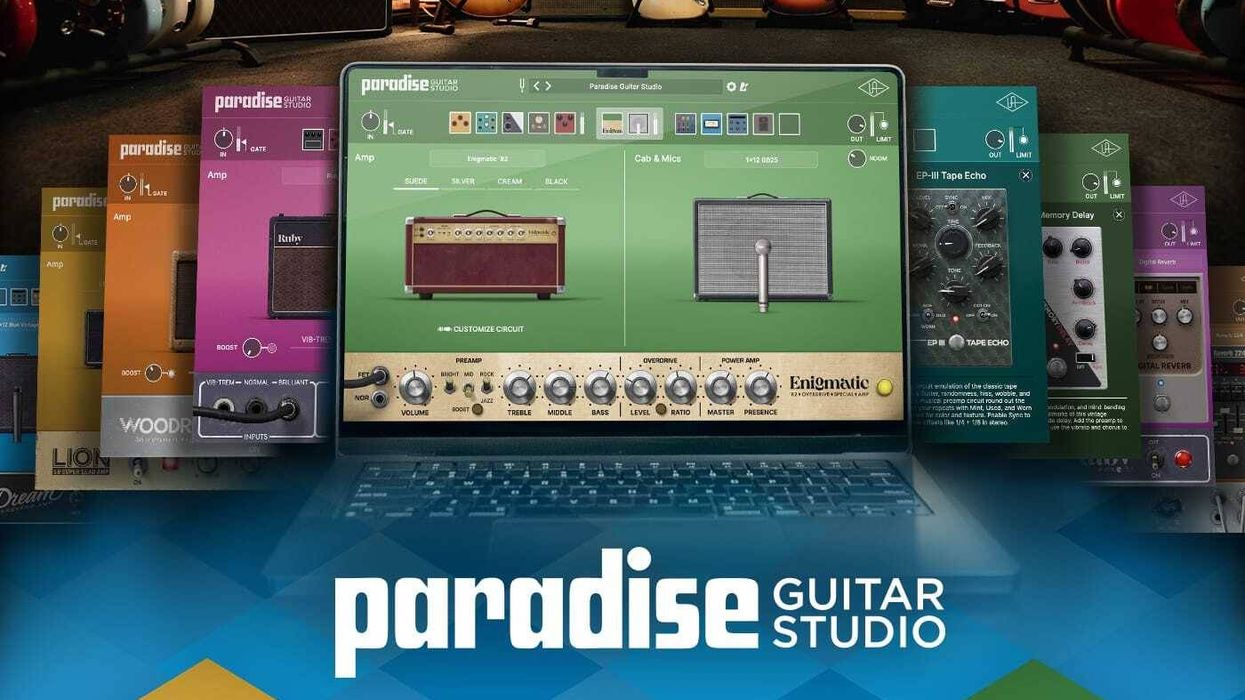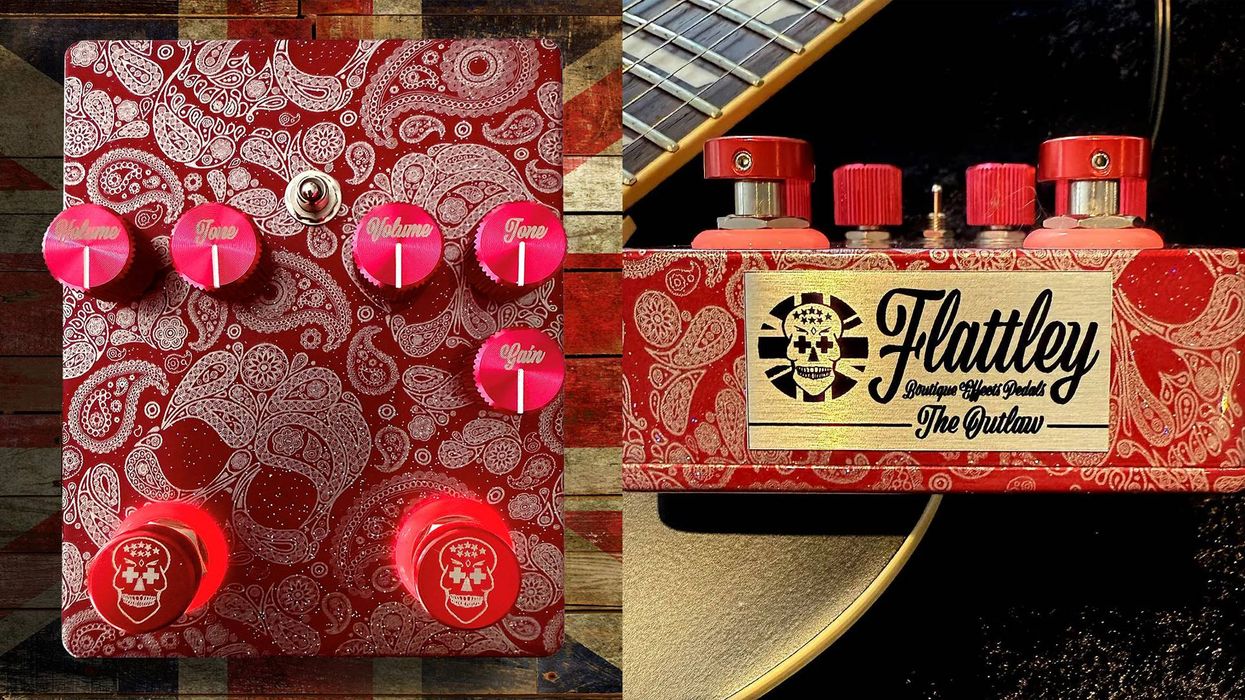Bensalem, PA (July 15, 2017) -- Earlier this year, Ibanez introduced two new updated Bass Workshop models to their BTB Bass Series: the 5-string BTB745, and its 6-string companion, the BTB746. These new models were lauded for their new updated body shape, which took comfort and stability to a new level.
For Summer 2017, Ibanez is expanding the BTB700 series with the bold, new BTB747 7-string model— and its more traditional counterpart, the 4-stirng BTB740. Both basses feature the newly designed contoured body—for superior comfort—and a longer upper horn, which connects to the body at the 18th fret for improved stability and greater sustain. Other features include:
- 35” scale neck-through design
- 3Rosewood fretboard fitted with stainless steel frets
- 3“Zero” fret —for superior intonation, also allows open strings to ring with the same resonance as notes played up the neck
- 3Mono-rail V bridge—with each isolated saddle securely locked to the body for maximum vibration transfer and minimal sympathetic string interference
- 3Bartolini BH2 pickups—for a punchy, articulate sound with well-developed overtones
The ever-evolving Ibanez BTB series has always aimed to provide bassists with innovative instruments to expand and inspire creative expression. With the addition of the BTB747 and 740, Ibanez continues to redefine the term “Boutique Bass”.
Features
BTB747
- BTB 9pc Maple/ Rosewood/ Walnut neck-through
- Walnut top/Mahogany/Ash body
- Rosewood fretboard w/Abalone dot inlay
- Medium Stainless Steel frets (+ zero fret)
- Mono-rail V bridge
- Bartolini BH2 neck pickup
- Bartolini BH2 bridge pickup
- Ibanez Custom Electronics 3-band EQ w/ 3-way Mid frequency switch (250Hz, 450Hz, 700Hz)
- Cosmo Black hardware
- D’Addario NYXL strings
- Natural Low Gloss (NTL) finish
- LIST: $1,377.76
BTB740
- BTB 5pc Maple/ Rosewood neck-through
- Walnut/ Mahogany/Ash body
- Rosewood fretboard w/Abalone dot inlay
- Medium Stainless Steel frets (+ zero fret)
- Mono-rail V bridge
- Bartolini BH2 neck pickup
- Bartolini BH2 bridge pickup
- Ibanez Custom Electronics 3-band EQ w/ 3-way Mid frequency switch (250Hz, 450Hz, 700Hz)
- Cosmo Black hardware
- D’Addario NYXL strings
- Natural Flat Low Gloss (NTL) finish
- LIST: $1,171.10
For 2017 Ibanez is reintroducing basses to their Premium line. The 5-string BTB1805, and its 6-string counterpart the BTB1806, are elegantly contoured with bodies made from select tonewoods with dedicated hardware and electronics designed to produce a huge, rich tone. Neck-through construction, a two-octave fretboard, and a super-deep cutaway, promise sleek playability and enduring sustain.
Some of the most notable features on these models include:
- BTB5/6 Wenge/Bubinga/Maple 9pc Neck-through w/ Graphite reinforcement rods
- Rosewood/ Ash wing/ Rosewood Body – for tonal clarity and superior attack
- Rosewood fretboard w/ Stainless Steel frets refined with the Premium Fret Edge treatment
- Aguilar DCB pickups
- Ibanez Custom Electronics 3-band EQ
- Mono-rail V bridge - for maximum vibration transfer with minimal sympathetic string interference
Both basses feature a 35" scale neck with a “zero” fret for precise intonation and to deliver the same resonance as notes played up the neck.
The Aguilar DCB pickups, provide a dynamic and responsive attack, well-developed overtones, and singing sustain. Combined with the Ibanez Custom Electronics 3-band EQ w/EQ bypass switch, and 3-way mid frequency switch, the BTB1805 and 1806 both offer immense tonal possibilities for any playing situation. The Mono-rail V bridge consists of isolated saddles, each securely locked to the body for maximum vibration transfer with minimal sympathetic string interference. D'Addario NYXL strings are installed to expand the dynamic range and harmonic response. Other features include a secure high-tech Neutrik locking output jack, Gotoh machine heads, gold hardware and gig bag.
Features
BTB1805/ BTB1806
- BTB 9pc Wenge/Bubinga/Maple Neck-through w/ Graphite reinforcement rods
- Rosewood Fretboard
- Medium Stainless Steel frets
- Rosewood / Ash wing / Rosewood body
- Aguilar DCB neck pickup
- Aguilar DCB bridge pickup
- Ibanez Custom Electronics 3-band EQ
- EQ bypass switch (passive tone control on treble pot), Mid frequency switch
- Mono-rail V bridge
- Gotoh machine heads
- Neutrik locking output jack
- Gold Hardware
- Gig Bag included
- BTB1805: $2,204.43
- BTB1806: $2342.21
Earlier this year, Ibanez introduced two new updated Bass Workshop models to their BTB Bass Series: the 5-string BTB1805E, and its 6-string companion, the BTB1806. These new models were lauded for their new updated body shape, which took comfort and stability to a new level.
For Summer 2017, Ibanez is expanding the BTB series with the BTB1905E and the BTB1906E. These new models feature Figured Maple tops with Ash/Figured Maple bodies. Both basses also feature the newly designed contoured body—for superior comfort—and a longer upper horn, which connects to the body at the 18th fret for improved stability. Neck-through construction, a two-octave fretboard, and a super-deep cutaway, promise sleek playability and enduring sustain. Other notable features on these models include:
- BTB Wenge/Bubinga/Maple 9pc Neck-through w/ Graphite reinforcement rods
- Figured Maple/ Ash/ Figured Maple body – for tonal clarity and superior attack
- Rosewood fretboard w/ Stainless Steel frets refined with the Premium Fret Edge treatment
- Aguilar DCB pickups
- Ibanez Custom Electronics 3-band EQ
- Mono-rail V bridge - for maximum vibration transfer with minimal sympathetic string interference
Both basses feature a 35’’ scale neck with a “zero” fret for precise intonation and to deliver the same resonance as notes played up the neck.
The Aguilar DCB pickups, provide a dynamic and responsive attack, well-developed overtones, and singing sustain. Combined with the Ibanez Custom Electronics 3-band EQ w/EQ bypass switch, and 3-way mid frequency switch, the BTB1905 and 1906 both offer immense tonal possibilities for any playing situation. The Mono-rail V bridge consists of isolated saddles, each securely locked to the body for maximum vibration transfer with minimal sympathetic string interference. D'Addario NYXL strings are installed to expand the dynamic range and harmonic response. Other features include a secure high-tech Neutrik locking output jack, Gotoh machine heads, gold hardware and gig bag.
Features
BTB1905/ BTB1906
- BTB 9pc Wenge/Bubinga Neck-through w/ Graphite reinforcement rods
- Rosewood Fretboard
- Medium Stainless Steel frets w/ Zero fret
- Rosewood /Ash wing /Rosewood body
- Aguilar DCB neck pickup
- Aguilar DCB bridge pickup
- Ibanez Custom Electronics 3-band EQ
- EQ bypass switch (passive tone control on treble pot), Mid frequency switch
- Mono-rail V bridge
- Gotoh machine heads
- Neutrik locking output jack
- Gold Hardware
- Finish: Brown Topaz Burst Low Gloss (BTL)
- Gig Bag included
- BTB1905: $2,204.43
- BTB1906: $2342.21
For 2017, Ibanez is celebrating the 30th Anniversary of the SR Series Bass. Earlier this year, to commemorate this milestone, Ibanez introduced four 30th Anniversary models —two from the esteemed Ibanez Premium line (SR30TH4PE & SR30TH5PE), and two standard series models (SR30TH4 & SR30TH5). To continue the celebration, this summer Ibanez is introducing three 2nd Edition SR Anniversary basses: 4 and 5-string versions of the SR30TH, (SR30TH4II & SR30TH5II) featuring Flamed Ash tops, and a Premium 5-string model (SR30TH5PII) featuring a Lacewood top.
All of the 30th anniversary basses share a unique 3 sound-hole design that enhances the warm resonance of the semi-hollow construction. Other features include:
SR30TH5PII 2nd Edition Anniversary Premium Bass
- Lacewood top with ash/ mahogany back body
- Atlas 5-pc wenge/bubinga neck w/ KTS™ TITANIUM rods – for the ultimate in neck stability
- Mono-rail V bridge—for complete intonation adjustment, with each isolated saddle securely locked to the body for maximum vibration transfer and minimal sympathetic string interference
- Nordstrand™ pickups— for a dynamic and responsive attack with well-developed overtones
- Hardshell case included
SR30TH4II and SR30TH5II 2nd Edition Anniversary Basses
- Flamed Ash top/ mahogany back body
- SR4 5-pc jatoba/bubinga neck w/ KTS™ TITANIUM rods
- Accuc-cast bridge—for complete intonation adjustment
- Bartolini MK-1 pickups— for a full, dynamic, punchy tone
Over the past three decades the SR series has become one of the most popular and distinctive bass guitars in the world.
Features
SR30TH5PII Premium 2nd Edition Anniversary
- Atlas-5 5pc Wenge/Bubinga neck w/KTS ™ TITANIUM rods
- Lacewood top/Ash/Mahogany back semi-hollow body
- Medium frets w/Premium fret edge treatment
- Mono-rail V bridge
- Nordstrand™ "Big Single" neck pickup
- Nordstrand™ "Big Single" bridge pickup
- Ibanez Custom Electronics 3-band EQ w/EQ bypass switch (passive tone control on treble pot) & Mid frequency switch
- Gold hardware
- Hardshell case
- List: $1,999.99
SR30TH4II 2nd Edition Anniversary
- SR4 5pc Jatoba/Bubinga neck
- Flamed Ash top/Mahogany semi-hollow body
- Rosewood fretboard w/Abalone oval inlay
- Medium frets
- Bartolini MK-1 neck pickup
- Bartolini MK-1 bridge pickup
- Ibanez Custom Electronics 3-band EQ w/Mid frequency switch
- Accu-cast B300 bridge
- Cosmo black hardware
- Finish: Dragon Eye Burst Flat (DEF)
- List: $933.32
SR30TH5II 2nd Edition Anniversary
- SR5 5pc Jatoba/Bubinga neck
- Flamed Ash top/Mahogany semi-hollow body
- Rosewood fretboard w/Abalone oval inlay
- Medium frets
- Bartolini MK-1 neck pickup
- Bartolini MK-1 bridge pickup
- Ibanez Custom Electronics 3-band EQ w/Mid frequency switch
- Accu-cast B305 bridge
- Cosmo black hardware
- Finish: Dragon Eye Burst Flat (DEF)
- List: $999.99
For more information:
Ibanez
